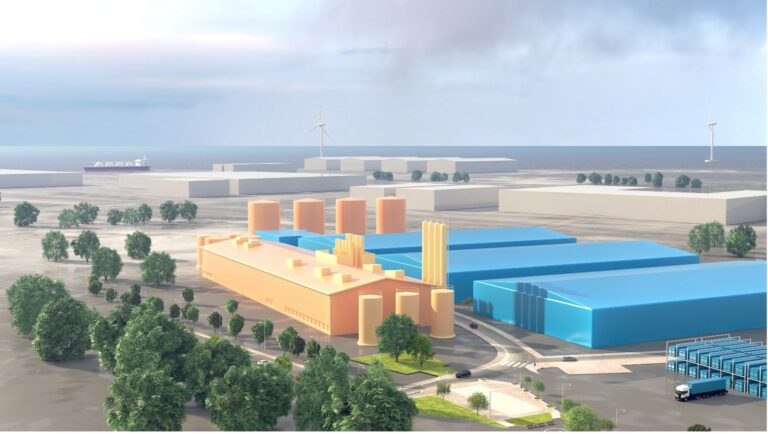
Green North Energy is dedicated to advancing the hydrogen economy and the production of green ammonia as part of its commitment to sustainability. The company’s flagship project in Naantali represents a significant step towards a sustainable future, focusing on green ammonia production using renewable energy sources.
Green North Energy is a project development company focused on the production of green ammonia through hydrogen plants. It was founded in 2021 when Elomatic engineers innovated new business opportunities for the soon-to-be-abandoned Naantali refinery area in Southwestern Finland. The brainstorming led to the concept of a scalable hydrogen plant, recognizing significant business potential and the opportunity to promote a shift away from the fossil economy.
Naantali project: A flagship in green ammonia production
Green North Energy’s Naantali project is the company’s first major initiative in green ammonia production. The project will be executed in two phases, with the first phase producing approximately 100,000 tonnes of green ammonia annually. In the second phase, production will double, bringing the total capacity to 200,000 tonnes per year.
The Naantali green hydrogen and ammonia plant has been granted environmental and water management permits at the beginning of 2025, allowing the Naantali project to proceed towards a final investment decision.
In addition to the Naantali project, Green North Energy is exploring the possibility of producing similar projects in Pori and Kemi. These projects aim to build even larger facilities that can significantly increase green ammonia production in Finland.
Production and uses of green ammonia
Green ammonia production requires hydrogen and nitrogen. Nitrogen is sourced from air separation plants, and hydrogen is produced using renewable energy. The ammonia production process also generates hot steam, which can be utilised in district heating or industrial applications. The heat from Naantali plant can be utilised in the district heating network of City of Turku.
Traditional ammonia production contributes to a substantial amount of CO2 emissions. The hydrogen needed for ammonia production has conventionally been produced from natural gas. In contrast, green ammonia is produced using renewable energy sources to extract hydrogen from water, eliminating the need for fossil fuels in the process.
Ammonia is widely used in various industries, including the production of fertilizers, plastics, adhesives, and textiles. Additionally, ammonia can be used as fuel for ships, making it a crucial component in future supply chains.
Market outlook and challenges
The market for ammonia in Europe is substantial. Russia is a major producer of ammonia, and since fertilizer production is considered critical for food supply, it is not subject to international sanctions. The European Union is working on patching this issue by implementing tariffs on Russian and Belarusian fertilizers. Though still pending ratification, this move signals a clear intent to pave the way for more sustainable, European-produced green ammonia solutions.
Another important target for ammonia production is to meet the needs of German industry, which has not fully recovered from the natural gas crisis. Before hydrogen pipelines are operational, ammonia also offers a solution for efficiently transporting hydrogen, as ammonia can be transported on ships.
In the future, Green North Energy aims to expand its production and support the development of new markets for green ammonia. This includes the production of fertilizers, adhesives, and other chemicals that can use green ammonia as a raw material.
Supply security and the case for self-sufficiency
Europe currently remains heavily dependent on imported ammonia. This reliance poses a risk to the continuity of essential industries, including agriculture and chemical manufacturing. While sanctions do not apply as ammonia is considered critical for food production, Europe should not rely on foreign import in a critical industry.
The dependency on foreign ammonia highlights the urgent need for European domestic production to improve security of supply and reduce vulnerability to external disruptions. Investing in European green ammonia production not only supports climate goals but also strengthens strategic autonomy.
To ensure the resilience of vital value chains and future competitiveness, Finland and Europe must accelerate the development of our own ammonia production capacity. Strengthening self-sufficiency in critical raw materials is not only an environmental or industrial goal, but a matter of national preparedness.